EASYFIT Kinesiology Tape
Login For Dealer Pricing
The Mueller Sports Medicine EASYfit® Kinesiology Tape applications are easy to apply, are latex free and allow complete freedom of movement while in use.
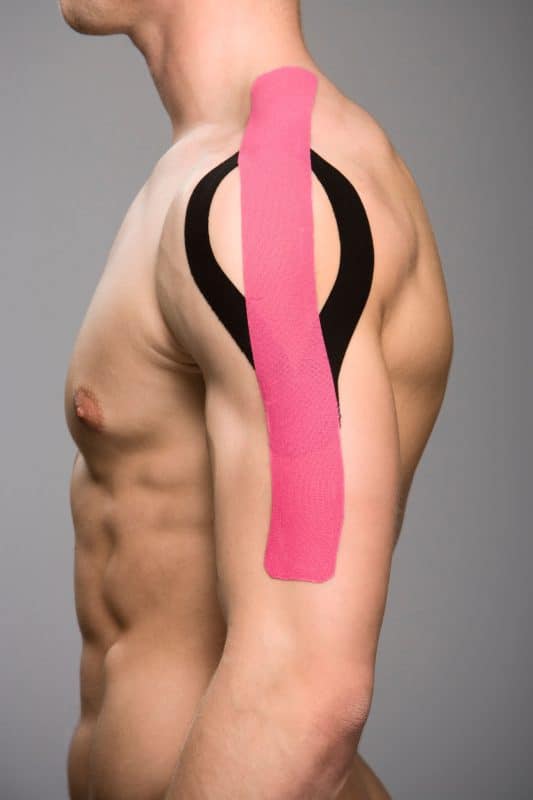
Kinesiology tape (also called K Tape) is designed to promote healing from repetitive stress injuries. This includes injuries from sporting, work or recreational activities. It works by gently lifting the skin over the injured area as the patient performs his or her regular daily movements.
K Tape was originally invented by Japanese chiropractor Kenzo Kase in the 1970s. Since then, however, its use has spread widely in the field of sports medicine.
By facilitating the flow of blood and/or lymphatic fluids through the area, k tape accelerates healing and reduces the pain of the injury. You can find more information on this type of taping therapy in our blog post on how k taping works.
As you browse the selection of k tape products below, you will notice that it includes two types of tape.
First, there are regular tape rolls. In general, you can use the regular k tape rolls on any area of the body on which you have experienced an injury. However, they will require somewhat more skill and knowledge for successful application.
Second, there are pre cut tape segments designed for specific areas of the body. You can use pre cuts only on specific body parts. However, you will find them easier to apply than the standard rolls.
K Tape is designed to have very high elasticity and to mimic the stretchiness of human skin. It can stretch to almost 200% of its original length. This helps it to support a full range of joint motion.
Contrary to traditional athletic tape, k tape is designed to allow the patient to continue using his or her limbs and joints in a natural way. It then uses these natural movements to slightly lift the patient’s skin and create a tiny space between the skin and the tissues beneath it.
By contrast, traditional athletic tape is used to stabilize the joint and restrict its range of motion. The idea is to reduce the stress on the joint in order to allow it to rest and recover naturally.
K Tape uses a medical grade adhesive that is heat activated and can help the tape stay in position for as long as 4-5 days.
If k tape is applied correctly, it can help to improve blood circulation through the site of an injury. It can also help to reduce circulation in the area.
In addition to improving blood flow, k tape can assist with lymphatic fluid circulation. Lymphatic fluid, also called lymph, contains damaged cells, bacteria and other elements that could inhibit healing of an injury. It also helps to transport white blood cells that fight infections. Hence, by improving lymphatic drainage, k tape supports faster injury recovery and helps to reduce swelling.
K tape may help to reduce perceived pain. It does so by altering the information transmitted by the body’s central nervous system in response to pain felt in different parts of the body.
K tape can play many roles in athletic and physical therapy, including the following:
When applying k tape, be careful to ensure that the area to which you intend to apply it is clean and dry. You should also avoid using any lotions, creams or oils on the area before application. Additionally, if body hair is present on the area, it is best to shave it before application.

Login For Dealer Pricing
The Mueller Sports Medicine EASYfit® Kinesiology Tape applications are easy to apply, are latex free and allow complete freedom of movement while in use.

Login For Dealer Pricing
K Tape Pre Gel helps keep k tape jobs firmly applied for longer and will also sooth and revitalize sensitive skin.
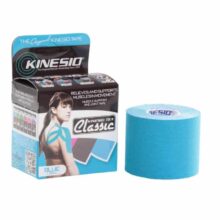
Login For Dealer Pricing
Dr. Kenzo Kase invented and developed the Kinesio Taping method over 30 years ago. The Kinesio Taping method is designed to facilitate the body’s natural healing process while allowing support and stability to muscles and joints without restricting the body’s range of motion. It successfully treats a variety of orthopaedic, neuromuscular, neurological and medical conditions.
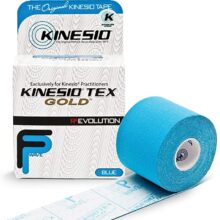
Login For Dealer Pricing
Kinesio Tex gold uses their patented Fingerprint (FP) technology to increase micro stimulation to the epidermis for improved therapeutic outcomes.
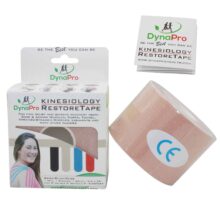
Login For Dealer Pricing
Use DynaPro Kinesiology RestoreTape for speedy pain relief and recovery from sore & aching muscles, Carpal Tunnel Syndrome, sprained ligaments, strained muscles or tendons and many other repetitive stress injuries. Available in colours black, blue, red and beige. Dimensions are 5 cm x 5 m or 5 cm x 31.5 m. This tape is hypoallergenic, latex free and made from 100% premium quality cotton fibre.

Login For Dealer Pricing
The Mueller Sports Medicine Kinesiology Tape – 30m Continuous Roll comes in a box designed for convenient dispensing and features Mueller’s revolutionary wave adhesive pattern for effective rehabilitation of sore, weak or damaged muscles or joints.
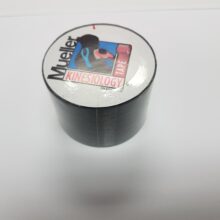
Login For Dealer Pricing
Try the Mueller Sports Medicine Kinesiology Tape – 5m Continuous Roll for rapid rehabilitation for your sore, weak or injured muscles and joints. With its revolutionary wave pattern adhesive, it will lift your skin as you move to optimize your circulation and promote early recovery to full health.
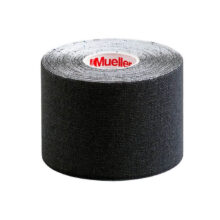
Login For Dealer Pricing
The Mueller Sports Medicine Kinesiology Tape – I-Strip Roll will lift the skin to promote blood and lymphatic circulation and reduce pain. It is designed to treat ligament injuries and repetitive stress injuries such as carpal tunnel. It is used by Olympians and professional athletes to reduce muscular pain, increase their mobility and speed their recovery from injuries.
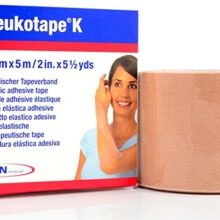
Login For Dealer Pricing
Leukotape K is a thin and comfort oriented kinesiology tape that can be used to treat a wide variety of soft tissue and repetitive stress injuries.

Login For Dealer Pricing
The Kinesio Pre Cut Starter Set – Knee, Back, Neck, Wrist,Foot, Shoulder combo set includes a Kinesio Pre Cut for the wrist, knee, neck, foot, back and shoulder. Each pre cut comes with instructions and illustrated guides to help you apply the tape for maximum benefit.

Login For Dealer Pricing
Kinesio® Pre-Cut, not a slap on solution. Kinesio® Pre-Cuts are true field tested Kinesio taping applications. Each Kinesio® Pre-Cut is adjustable and designed for easy application. For the Back, Neck, Knee, Wrist and Foot. Each application comes with easy to follow, step-by-step application instruction, as well as measurement guides on the paper backing to adjust to your needs.